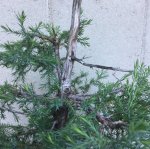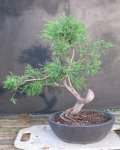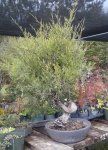Bart99
Yamadori
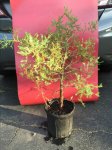


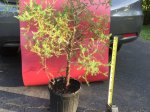 A few years ago when I first got into bonsai, I dug up a couple small trees in my yard (that needed to be removed anyway) and stuck them in pots. I've done almost nothing to them since then other than cut down the tops. In retrospect, I realize that was probably the exact wrong thing to do, but the damn thing s kept blowing over in the wind, so I figured I'd reduce the surface of the "sail".
A few years ago when I first got into bonsai, I dug up a couple small trees in my yard (that needed to be removed anyway) and stuck them in pots. I've done almost nothing to them since then other than cut down the tops. In retrospect, I realize that was probably the exact wrong thing to do, but the damn thing s kept blowing over in the wind, so I figured I'd reduce the surface of the "sail". Anyhow I have two trees that look similar. They have straight trunks with nothing happening for the first 6 inches or so.
Is there anything that can be done to these guys? (Only one tree is pictured).
Can one of them be made into a raft style? Does that work with Esstern red cedars?
(I think they're Eastern red cedars, but I'm not positive. We have them growing wild all over the place and when they get older the leaves become less pointy. I found some pictures of young ones that looked like this, but if I'm off base here, please correct me!)

